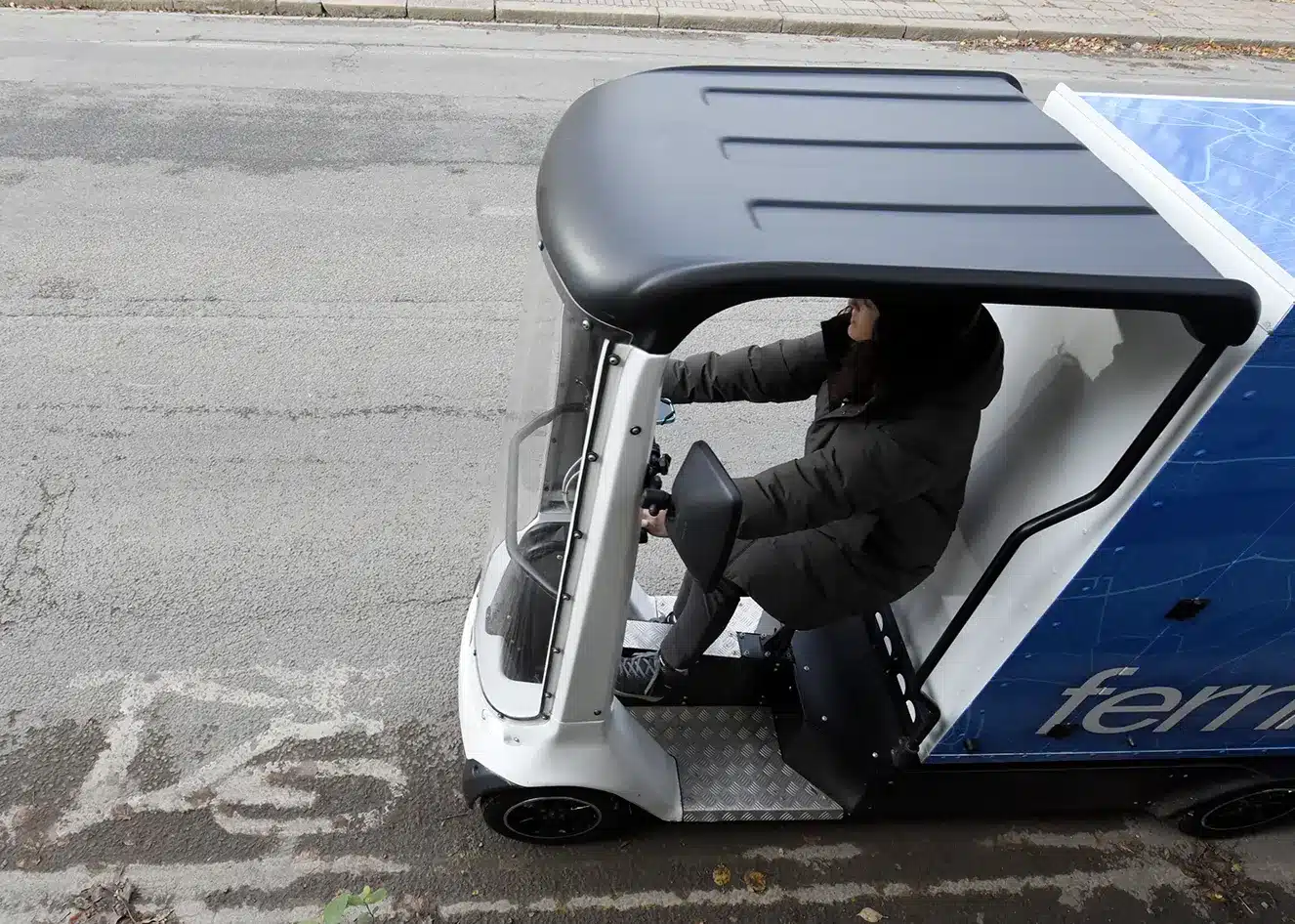Urban logistics are evolving, and the need for efficient, eco-friendly solutions has never been more pressing. With congested streets, increasing delivery demands, and rising environmental concerns, Fernhay’s eQuad offers a transformative approach to last-mile deliveries. This compact, versatile vehicle is designed for the challenges of urban environments, enabling businesses to reduce costs, improve delivery times, and contribute to a greener future.
In this guide, we will explore how businesses can maximise their delivery routes using the eQuad, optimising urban logistics while enhancing operational efficiency.
The Rise of Urban Delivery Challenges
Urban areas present significant logistical challenges for delivery services. As e-commerce continues to grow, so does the demand for fast, reliable, and sustainable deliveries. However, navigating through congested city streets, adhering to emissions regulations, and finding cost-effective ways to transport goods are daily hurdles for many logistics companies.
- Congestion: City streets are often clogged with vehicles, slowing down deliveries and increasing fuel consumption.
- Environmental Concerns: Many cities are implementing strict emissions standards, penalising companies with high-polluting delivery fleets.
- Cost Pressures: Rising fuel costs and driver wages add to the financial burden of urban deliveries.
The need for smarter, more sustainable solutions has become apparent, and Fernhay’s eQuad is at the forefront of this change.
What is the eQuad?
The eQuad is Fernhay’s innovative four-wheeled electric cargo bike, designed specifically for the urban environment. It’s a pedal-assisted vehicle that can easily navigate through narrow streets and avoid traffic congestion, all while carrying substantial cargo loads. Its small size, electric assistance, and zero-emissions capabilities make it an ideal solution for last-mile deliveries.
Key Features of the eQuad:
- Compact Design: At just 84 cm wide, it can easily manoeuvre through tight spaces.
- Zero Emissions: Fully electric with a range of up to 40 miles per charge.
- Payload Capacity: Capable of carrying up to 1.5 cubic metres or 200 kg of cargo.
- Cost Efficiency: Reduced fuel and operational costs compared to traditional delivery vans.
By adopting the eQuad, businesses can significantly reduce their environmental impact while improving delivery speeds in urban areas.
Benefits of eQuad for Urban Logistics
1. Efficiency in Congested Areas
The eQuad is designed to bypass one of the biggest obstacles in urban logistics: traffic. Its small size allows it to use bike lanes and take alternative routes that would be inaccessible to larger vehicles. This leads to faster delivery times, especially during peak traffic hours.
2. Sustainability and Emissions Compliance
Many cities are tightening regulations on carbon emissions, and traditional delivery vans are often penalised with additional taxes or restricted access to certain areas. The eQuad, being a zero-emission vehicle, allows businesses to comply with these regulations effortlessly, saving costs on environmental taxes while maintaining a sustainable delivery model.
3. Cost Savings
Operating an eQuad is far more cost-effective than using a traditional van for deliveries. The electric motor is not only cheaper to run than a fuel engine, but the maintenance costs are also significantly lower. Businesses can expect fewer breakdowns and reduced wear and tear on city roads. Over time, the reduction in fuel costs and lower maintenance expenses can lead to significant savings.
How to Maximise Delivery Routes with the eQuad
1. Route Optimisation Software
Integrating route optimisation software with the eQuad can further enhance delivery efficiency. These tools use real-time traffic data, delivery locations, and even weather conditions to determine the fastest and most efficient routes. By reducing the time spent in traffic and avoiding unnecessary detours, businesses can complete more deliveries in a shorter period.
2. Strategic Micro-Hubs
Many businesses are adopting the micro-hub model, where delivery vans drop off goods at a central urban location, and smaller vehicles like the eQuad handle the last-mile delivery. This strategy reduces the need for large vans to navigate city streets and allows the eQuad to complete deliveries more quickly and efficiently.
3. Off-Peak Deliveries
Scheduling deliveries during off-peak hours can significantly reduce delivery times. The eQuad is well-suited for early morning or late-night deliveries, when traffic is lighter, and parking restrictions are relaxed. This not only speeds up the delivery process but also minimises operational costs associated with fuel and driver wages during peak hours.
The Future of Urban Delivery with eQuad
As cities grow and environmental concerns rise, the demand for sustainable urban logistics solutions will only increase. Fernhay’s eQuad represents a forward-thinking approach to last-mile delivery, one that prioritises efficiency, sustainability, and cost savings. By adopting the eQuad, businesses can not only optimise their delivery routes but also position themselves as leaders in the movement towards greener, smarter urban logistics.
The eQuad is more than just a delivery vehicle—it’s a solution to the growing challenges of urban logistics. With its ability to reduce costs, improve efficiency, and comply with environmental regulations, it’s a tool every business should consider for their last-mile delivery needs.

